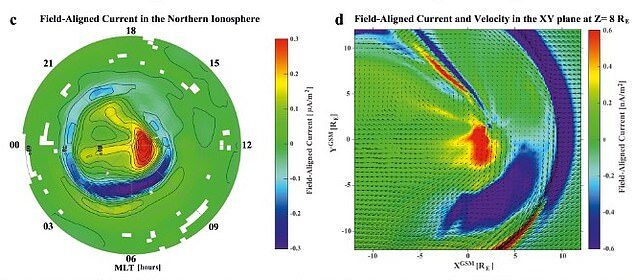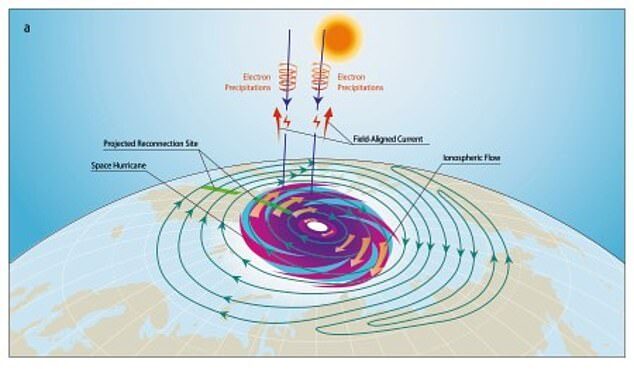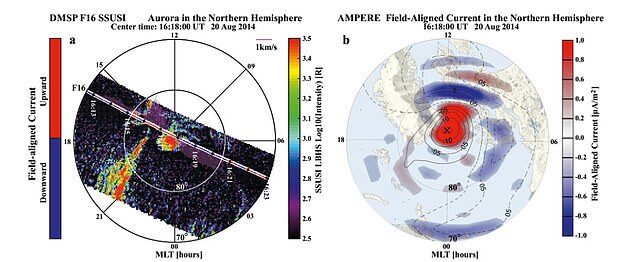
A team led by Shandong University in China made the announcement after analyzing a 621-mile wide swirling mass of plasma spotted hundreds of miles above the North Pole.
Observations show a large cyclone-shaped auroral spot with a nearly zero-flow center and strong circular horizontal plasma flow and shears, all of which are found in hurricanes in the lower atmosphere - but instead of raining water, it rained electrons.
The space hurricane moved in an anti-clockwise rotation and lasted about eight hours before breaking down.

Comment: With Earth's weakening magnetic field and the 'grand' solar minimum, it's likely we will see an increase in space weather-related disruption: A warning from history: The Carrington event was not unique
Professor Mike Lockwood, space scientist at the University of Reading, said the hurricanes could be a universal phenomenon on planets and moons with magnetic fields and plasma.
Comment: They could be, but before we get there, let's first take stock of the fact that A PLASMA HURRICANE TOOK PLACE ABOVE THE NORTH POLE!
He said: 'Until now, it was uncertain that space plasma hurricanes even existed, so to prove this with such a striking observation is incredible.
'Tropical storms are associated with huge amounts of energy, and these space hurricanes must be created by unusually large and rapid transfer of solar wind energy and charged particles into the Earth's upper atmosphere.
'Plasma and magnetic fields in the atmosphere of planets exist throughout the universe, so the findings suggest space hurricanes should be a widespread phenomena.'
Previous observations have found space hurricanes on Mars, Saturn and Jupiter, which are similar to hurricanes in the low atmosphere, along with solar gas that swirl deep within the sun's atmosphere.
Comment: Electric currents driven by solar wind create Saturn's auroras, heat planet's atmosphere - NASA

'A hurricane is clearly associated with strong energy and mass transportation, so a hurricane in Earth's upper atmosphere must be violent and efficiently transfer solar wind/magnetosphere energy and momentum into the Earth's ionosphere,' reads the study published in Nature.
The space hurricane was spotted on August 20, 2014, which scientists documented as a relatively stable northward interplanetary magnetic field condition (IMF).
IMF is the solar magnetic field that is pulled from the solar corona by solar wind.

After about eight hours, the space hurricane perished when the IMF turned southward.
The team explained space hurricanes open a rapid energy transfer channel from space to the ionosphere and thermosphere, which could help reveal important details of space weather effects such as increased satellite drag, disturbances in high frequency radio communications and increased errors in over-the-horizon radar location, satellite navigation and communication systems.



[Link]
Best of the Web: Astonishing discovery: First-ever 'space hurricane' was observed in upper atmosphere above North Pole in 2014
In a new study in Nature Communications by Zhang et al. [2021], the first observations of a space hurricane over the Earth's polar ionosphere is shown. Co-author and professor at the Birkeland...